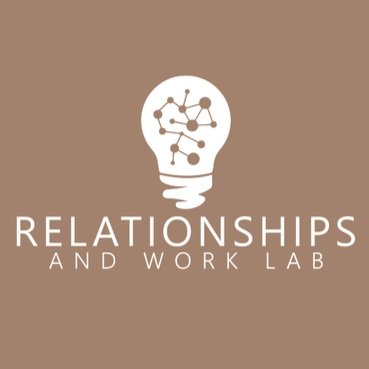Inclusive Mentoring
Our lab has been working on understanding what mentors can do to promote inclusion. In a qualitative study of protégés from underrepresented racial/ethnic groups, we identified three dimensions of inclusive mentor behavior: professional integration, personal integration, and protection. Below, we summarize these dimensions and the specific behaviors included within each category.
Citation:
Robertson, M. M., Zhang, F., and Kendrick, M. (2023, April). Mentoring for inclusion: A qualitative study of how mentors promote and undermine inclusion among racial/ethnic minority mentees. In K. Facteau and L. Eby (Co-Chairs) Science and practice of mentoring: Trends, recommendations, and priorities for future research. Presented at the Society for Industrial and Organizational Psychology Conference, Boston, MA.
Professional Integration
-
Inviting
Protégés feel included when their mentors invite them to participate in meetings, events, and projects that they otherwise would not have access to. Examples include:
Inviting your protégé to important meetings
Inviting your protégé to join important projects
Inviting your protégé to attend high-level trainings
Inviting your protégé to special professional events (e.g., lunches, receptions)
-
Asking Input
Protégés feel included when their mentors encourage them to share their professional opinions on important projects and decisions. It is also important that their input is seriously considered and, if possible, incorporated. Examples include:
Asking your protégé for their input when you are making an important decision
Asking your protégé for their feedback
Encouraging your protégé to voice their opinions
Incorporating your protégé’s input whenever possible
-
Giving Control
Protégés feel included when their mentors provide opportunities for them to independently make decisions about important work. Giving control involves trusting the protégé, rather than micromanaging. Examples include:
Telling your protégé that you trust their ability to work independently
Delegating authority to your protégé
Letting your protégé accomplish tasks in their own way—even if it is different than your way!
Giving your protégé the discretion to deviate from plans when appropriate
-
Keeping Informed
Protégés feel included when their mentors share important information with them. Protégés want to be “in the know” about things that may affect them and their profession. Examples include:
Giving your protégé the “heads up” about important dates or events
Communicating information about your profession that your protégé might not have access to (e.g., new opportunities, changes)
Providing “in the moment” training on how to conduct new tasks
Personal Integration
-
Engaging Personally
Protégés feel included when their mentors allow the mentoring relationship to become integrated into personal life. This may involve interacting outside of scheduled meetings, visiting personal locations (e.g., inviting to home), engaging in non-work activities (e.g., sharing meals), and discussing personal life. Examples include:
Asking your protégé about their nonwork life (e.g., How was your weekend?, How is the family?, What’s new in your life?)
Meeting with your protégé in nonwork locations (e.g., at a restaurant, at a coffee shop, at your home)
Talking about your own personal life (e.g., the weekend, your family, what’s new)
Celebrating your protégé’s positive life events (e.g., wedding, baby shower, birthday) and being there for them during negative life events (e.g., deaths, illness)
-
Being Available
Protégés feel included when their mentors make themselves available during discretionary time. Available mentors have an “open door policy” and respond to protégés quickly, even when protégés initiate contact outside of regular meetings.
Communicating an “open door policy” to your protégé (e.g., telling them they can call/email you anytime)
Responding quickly when your protégé reaches out to you
Making yourself available during discretionary time (e.g., responding outside of regularly scheduled meetings)
Protection
-
Defending
Protégés feel included when their mentors stand up for them to others. This might involve defending from criticism and taking public responsibility if mistakes happen, rather than blaming the protégé.
Backing up your protégé when others are unhappy with them
Standing up for your protégé when they are criticized
Keeping information that would harm them in confidence
Publicly taking responsibility when things don’t go well, rather than blaming the protégé
-
Removing Blame
Protégés feel included when their mentors protect their self-esteem by removing blame. Protégés are often new to their roles, and learning involves recognizing knowledge gaps and making mistakes. Inclusive mentors respond to protégé’s inexperience by normalizing making mistakes and not knowing the right answer. They discuss mistakes without making the protégé feel stupid or small, in a way that is not patronizing or condescending.
Validating challenges associated with inexperience (“I know there is a lot to learn”, “I know it’s hard to take everything in at the beginning”)
Normalizing making mistakes
Inviting and affirming asking questions
Disclosing your personal experience making mistakes or being inexperienced
Personally taking responsibility when things don’t go well (e.g., I should have communicated more clearly about this)
-
Preserving Resources
Protégés feel included when mentors act to protect their resources, including their time, energy, and finances. Inclusive mentors protect their protégés from burnout and exhaustion. They also may provide resources to protect against resource losses (e.g., loans).
Protecting your protégé against overwork
Taking action to provide resources or reducing demands as needed
Protecting against resource loss by providing information and tangible resources
